
Unlocking the Versatility of PVC Film: A Material Revolutionizing Modern Packaging
2025-11-14 16:55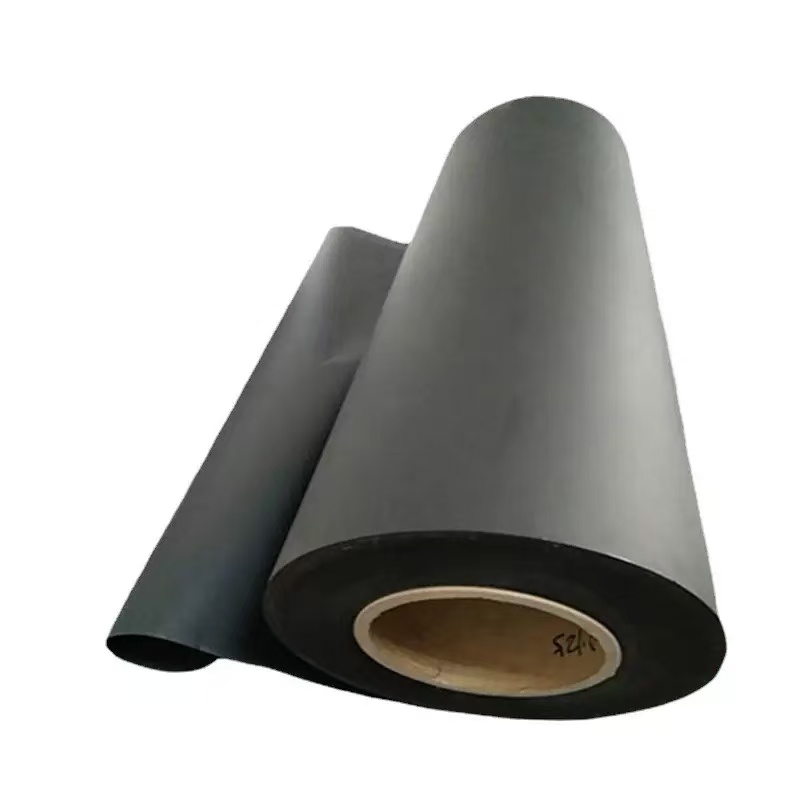 In the shadowed corners of industrial innovation, where heat meets hazard and visibility yields to protection, black heat-resistant polypropylene (PP) flame-retardant film emerges as a stealthy sentinel. Crafted from polypropylene resin—a thermoplastic hydrocarbon polymer derived from propylene monomers—this film undergoes a transformative alchemy: infused with carbon black for opacity, fortified with heat stabilizers like hindered phenols, and armed with flame suppressants such as halogen-free phosphorus compounds or intumescent systems. The result? A material that doesn't just endure fire's fury but dances with it, charring controllably to self-extinguish while shrugging off temperatures up to 150°C without warping. Picture a factory floor where sparks fly from welding torches, or a kitchen blaze threatening a forgotten oven mitt: this film, typically 20-100 microns thick, stands unyielding, its dark hue absorbing light to mask contents discreetly while its molecular backbone—long isotactic chains of methyl-substituted ethylene units—provides the tensile grit to hold the line. Evolving from basic PP sheets in the 1950s, today's black variants tackle modern demands for safety in packaging, insulation, and beyond. As we dissect its robust properties—flame retardancy that halts spread in seconds, thermal resilience that defies distortion, and mechanical might that bends but never breaks—we'll illuminate its roles in food composite packaging, colorful printing applications, automotive shields, electronic enclosures, and agricultural covers. This isn't mere plastic; it's a blackened guardian, where every layer whispers reliability amid chaos.
In the shadowed corners of industrial innovation, where heat meets hazard and visibility yields to protection, black heat-resistant polypropylene (PP) flame-retardant film emerges as a stealthy sentinel. Crafted from polypropylene resin—a thermoplastic hydrocarbon polymer derived from propylene monomers—this film undergoes a transformative alchemy: infused with carbon black for opacity, fortified with heat stabilizers like hindered phenols, and armed with flame suppressants such as halogen-free phosphorus compounds or intumescent systems. The result? A material that doesn't just endure fire's fury but dances with it, charring controllably to self-extinguish while shrugging off temperatures up to 150°C without warping. Picture a factory floor where sparks fly from welding torches, or a kitchen blaze threatening a forgotten oven mitt: this film, typically 20-100 microns thick, stands unyielding, its dark hue absorbing light to mask contents discreetly while its molecular backbone—long isotactic chains of methyl-substituted ethylene units—provides the tensile grit to hold the line. Evolving from basic PP sheets in the 1950s, today's black variants tackle modern demands for safety in packaging, insulation, and beyond. As we dissect its robust properties—flame retardancy that halts spread in seconds, thermal resilience that defies distortion, and mechanical might that bends but never breaks—we'll illuminate its roles in food composite packaging, colorful printing applications, automotive shields, electronic enclosures, and agricultural covers. This isn't mere plastic; it's a blackened guardian, where every layer whispers reliability amid chaos. The prowess of black heat-resistant PP flame-retardant film hinges on a meticulously engineered profile, blending chemical ingenuity with physical dominance to outpace rivals in high-stakes environments. Foremost is its flame retardancy, quantified by a UL 94 V-0 rating—the gold standard where samples self-extinguish within 10 seconds of ignition, with no flaming drips to ignite cotton below. This stems from intumescent additives that swell into a carbon-rich foam at 200-300°C, insulating the polymer matrix and starving flames of oxygen through radical scavenging. In lab trials, exposed films form a 5-10mm char layer that blocks heat transfer, limiting temperature rise to under 50°C on the unexposed side. Halogen-free formulations sidestep toxic gas emissions, releasing instead water vapor and ammonia to dilute combustibles, making it a darling for eco-conscious specs. Vividly, imagine a simulated warehouse fire: a cascade of ignited debris rains down, yet the PP film-wrapped pallets smolder briefly before quenching, averting a conflagration that could claim inventory worth fortunes.
The prowess of black heat-resistant PP flame-retardant film hinges on a meticulously engineered profile, blending chemical ingenuity with physical dominance to outpace rivals in high-stakes environments. Foremost is its flame retardancy, quantified by a UL 94 V-0 rating—the gold standard where samples self-extinguish within 10 seconds of ignition, with no flaming drips to ignite cotton below. This stems from intumescent additives that swell into a carbon-rich foam at 200-300°C, insulating the polymer matrix and starving flames of oxygen through radical scavenging. In lab trials, exposed films form a 5-10mm char layer that blocks heat transfer, limiting temperature rise to under 50°C on the unexposed side. Halogen-free formulations sidestep toxic gas emissions, releasing instead water vapor and ammonia to dilute combustibles, making it a darling for eco-conscious specs. Vividly, imagine a simulated warehouse fire: a cascade of ignited debris rains down, yet the PP film-wrapped pallets smolder briefly before quenching, averting a conflagration that could claim inventory worth fortunes.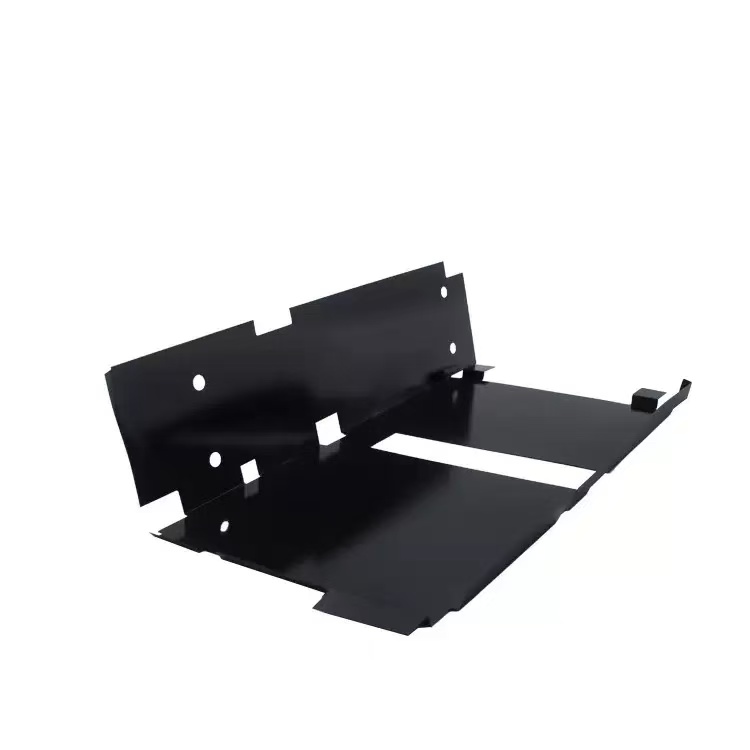 Thermal endurance cements its heat-resistant badge, with a Vicat softening point exceeding 150°C and deflection temperature under load at 100°C—figures that eclipse standard PP by 30-50°C through nucleating agents like talc or calcium carbonate, which accelerate crystallization for denser microstructures. This stability manifests in zero shrinkage during autoclave cycles at 121°C for 30 minutes, crucial for sterilizable packs. At cryogenic lows, down to -20°C, it retains ductility, avoiding embrittlement that shatters lesser films. The black pigmentation, from 2-5% carbon black dispersion, not only obscures light-sensitive goods but enhances UV resistance, absorbing 99% of wavelengths below 400nm to prevent photodegradation, extending outdoor lifespans by years. Mechanically, it's a titan: tensile strength clocks 40-60 MPa longitudinally, with elongation at break up to 500%, thanks to biaxial orientation that aligns chains for balanced isotropy. Puncture resistance rivals steel foil at 200-300N, derived from a semi-crystalline morphology where spherulites interlock like armored scales.
Thermal endurance cements its heat-resistant badge, with a Vicat softening point exceeding 150°C and deflection temperature under load at 100°C—figures that eclipse standard PP by 30-50°C through nucleating agents like talc or calcium carbonate, which accelerate crystallization for denser microstructures. This stability manifests in zero shrinkage during autoclave cycles at 121°C for 30 minutes, crucial for sterilizable packs. At cryogenic lows, down to -20°C, it retains ductility, avoiding embrittlement that shatters lesser films. The black pigmentation, from 2-5% carbon black dispersion, not only obscures light-sensitive goods but enhances UV resistance, absorbing 99% of wavelengths below 400nm to prevent photodegradation, extending outdoor lifespans by years. Mechanically, it's a titan: tensile strength clocks 40-60 MPa longitudinally, with elongation at break up to 500%, thanks to biaxial orientation that aligns chains for balanced isotropy. Puncture resistance rivals steel foil at 200-300N, derived from a semi-crystalline morphology where spherulites interlock like armored scales.
Barrier credentials add defensive depth: while not airtight like EVOH, its oxygen transmission rate of 1000-2000 cc/m²/day suffices for non-perishables, and water vapor permeability at 5-10 g/m²/day keeps humidity at bay in composites. Chemically inert to most organics and acids, it repels oils and solvents, with migration levels below 10mg/kg per FDA guidelines for food contact. Lightweight at 0.9 g/cm³ density, it slashes payload by 40% versus glass, easing global shipping. Processability is its secret weapon—extrudable at 220-260°C with melt flow indices of 5-10 g/10min, it laminates via hot-melt adhesives or co-extrusion, yielding peel strengths over 3N/cm. Print receptive after corona treatment (to 38 dynes/cm), it grips inks tenaciously. Economically, production costs hover 15-20% below flame-retardant PVC, with recyclability via mechanical regranulation retaining 80% properties. These attributes, honed through iterative compounding, render the film not just survivable, but superior in scenarios where fire, heat, or obscurity demand discretion.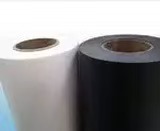
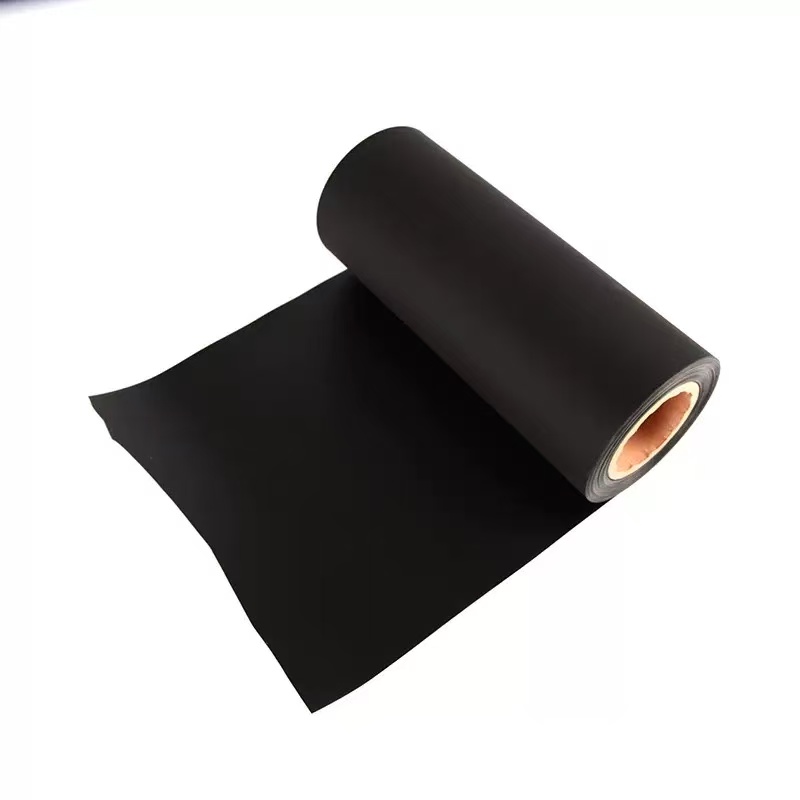 Vividly, in a bustling distribution center during a summer heatwave, pallets of black PP-wrapped rice sacks endure 50°C ambient without softening, their puncture-proof weave (often woven variants) shrugging forklift prongs. Compliance with EU 10/2011 regs ensures no off-tastes migrate to grains, and its machinability supports form-fill-seal speeds of 200 cycles/min. Beyond staples, it's pivotal for coffee pods: the black film masks roast darkness, heat-seals at 140°C without scorching, and flame-proofs against grinder sparks. In frozen composites, it insulates against thermal shock, reducing ice crystal formation by 20% in veggies. Sustainability angles shine too—post-consumer recycled content up to 50% without compromising retardancy—aligning with zero-waste mandates. Thus, in food realms, this film doesn't just package; it fortifies, turning potential hazards into hushed efficiencies.Transitioning to colorful printing packaging, the film's shadowy canvas paradoxically amplifies vibrancy, serving as a substrate where inks bloom against matte black depths. Surface-modified for ink adhesion—via flame plasma boosting polarity—it embraces solvent or water-based flexo prints, achieving dot gains under 15% for sharp contrasts. The carbon black base enhances opacity (99.9% light block), preventing show-through in reverse prints, ideal for multi-color labels on drums or boxes. Envision a cosmetics warehouse: black PP sleeves for hair dyes, printed with electric blues and golds, withstand 80°C storage without bleeding, their tensile uniformity ensuring no curl during roll-to-sheet conversion. Flame retardancy adds irony—printed prototypes endure glow-wire tests at 750°C, charring neatly to expose no underlying hazards.
Vividly, in a bustling distribution center during a summer heatwave, pallets of black PP-wrapped rice sacks endure 50°C ambient without softening, their puncture-proof weave (often woven variants) shrugging forklift prongs. Compliance with EU 10/2011 regs ensures no off-tastes migrate to grains, and its machinability supports form-fill-seal speeds of 200 cycles/min. Beyond staples, it's pivotal for coffee pods: the black film masks roast darkness, heat-seals at 140°C without scorching, and flame-proofs against grinder sparks. In frozen composites, it insulates against thermal shock, reducing ice crystal formation by 20% in veggies. Sustainability angles shine too—post-consumer recycled content up to 50% without compromising retardancy—aligning with zero-waste mandates. Thus, in food realms, this film doesn't just package; it fortifies, turning potential hazards into hushed efficiencies.Transitioning to colorful printing packaging, the film's shadowy canvas paradoxically amplifies vibrancy, serving as a substrate where inks bloom against matte black depths. Surface-modified for ink adhesion—via flame plasma boosting polarity—it embraces solvent or water-based flexo prints, achieving dot gains under 15% for sharp contrasts. The carbon black base enhances opacity (99.9% light block), preventing show-through in reverse prints, ideal for multi-color labels on drums or boxes. Envision a cosmetics warehouse: black PP sleeves for hair dyes, printed with electric blues and golds, withstand 80°C storage without bleeding, their tensile uniformity ensuring no curl during roll-to-sheet conversion. Flame retardancy adds irony—printed prototypes endure glow-wire tests at 750°C, charring neatly to expose no underlying hazards. In retail, shrink labels of oriented black PP contract 30% at 120°C around bottles, the dark tone masking sediment while colorful overprints pop, boosting shelf impact by 25% in blind tests. For industrial drums, it adorns chemical containers with hazard icons, its chemical resistance repelling toluene splashes that would fade lesser stocks. High-speed gravure lines favor its slip agents, minimizing static for 300m/min runs, and UV-cured varnishes seal graphics against abrasion, surviving 500 Taber cycles. A festival scene unfolds: black PP-bannered stalls, flame-retardant against grill flares, display tie-dye motifs that endure rainy nights unwarped. For e-commerce, overwrap films print barcodes boldly, the film's tear propagation control (Elmendorf <200mN) preventing premature openings. This fusion of stealth and spectacle extends to promotional wraps, where metallized accents on black PP evoke luxury, all while passing vertical burn tests with zero afterflame.
In retail, shrink labels of oriented black PP contract 30% at 120°C around bottles, the dark tone masking sediment while colorful overprints pop, boosting shelf impact by 25% in blind tests. For industrial drums, it adorns chemical containers with hazard icons, its chemical resistance repelling toluene splashes that would fade lesser stocks. High-speed gravure lines favor its slip agents, minimizing static for 300m/min runs, and UV-cured varnishes seal graphics against abrasion, surviving 500 Taber cycles. A festival scene unfolds: black PP-bannered stalls, flame-retardant against grill flares, display tie-dye motifs that endure rainy nights unwarped. For e-commerce, overwrap films print barcodes boldly, the film's tear propagation control (Elmendorf <200mN) preventing premature openings. This fusion of stealth and spectacle extends to promotional wraps, where metallized accents on black PP evoke luxury, all while passing vertical burn tests with zero afterflame.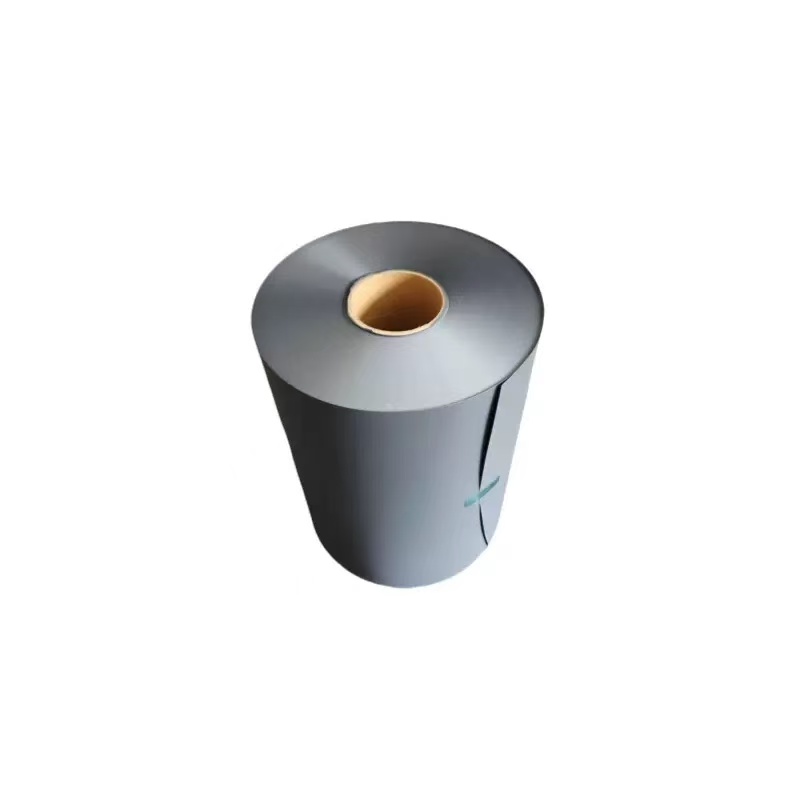 Challenges like bio-degradability spur R&D—additives now enable 20% compostability—but its core endures.In closing, black heat-resistant PP flame-retardant film's arsenal—quenching flames, taming heat, veiling securely—empowers applications that shield silently yet strike boldly. From the sizzle-proof snack to the shadowed circuit, it embodies resilience, a dark thread weaving safety into tomorrow's tapestry.
Challenges like bio-degradability spur R&D—additives now enable 20% compostability—but its core endures.In closing, black heat-resistant PP flame-retardant film's arsenal—quenching flames, taming heat, veiling securely—empowers applications that shield silently yet strike boldly. From the sizzle-proof snack to the shadowed circuit, it embodies resilience, a dark thread weaving safety into tomorrow's tapestry.